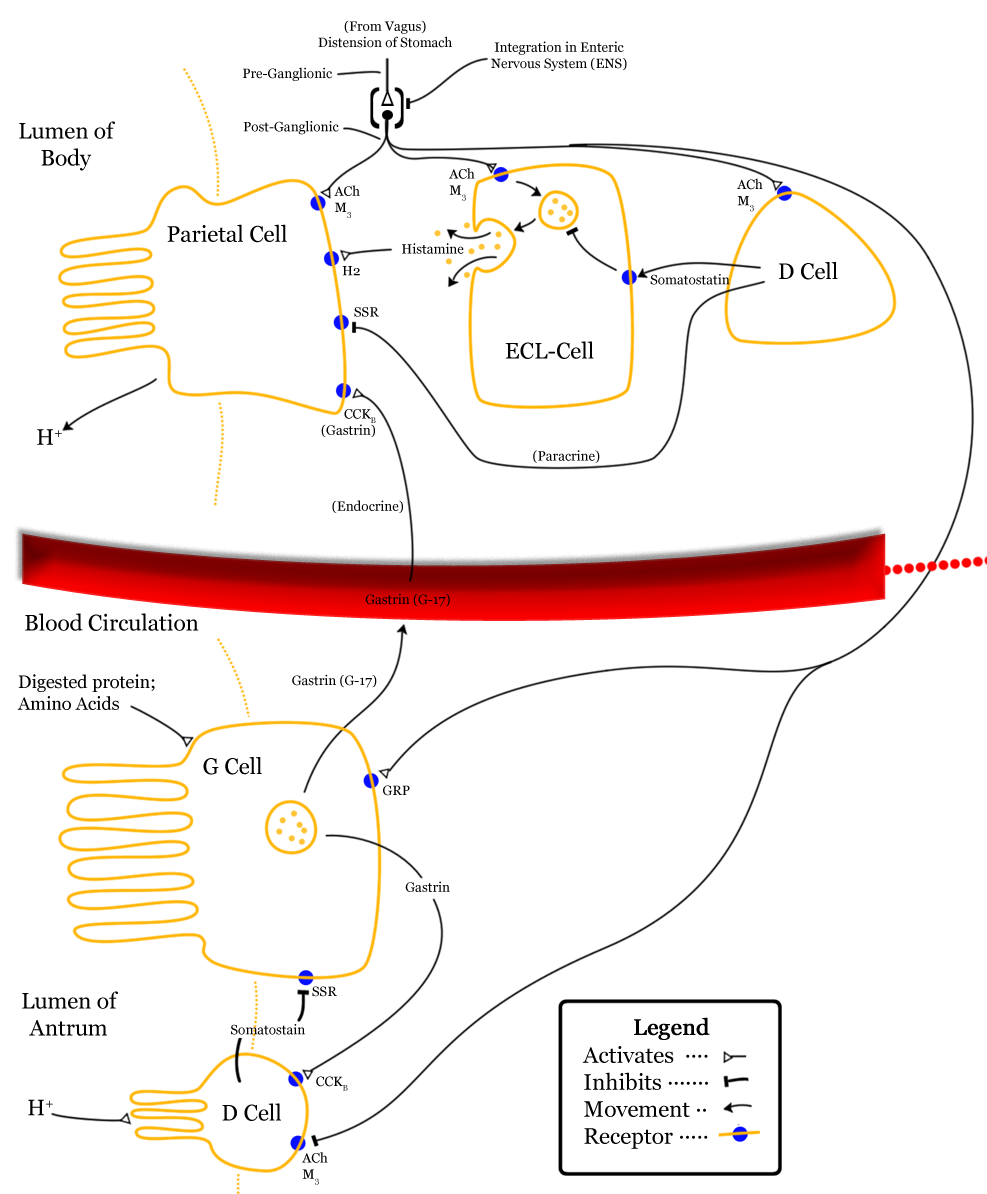Parietal cell
Overview


|
WikiDoc Resources for Parietal cell |
|
Articles |
|---|
|
Most recent articles on Parietal cell Most cited articles on Parietal cell |
|
Media |
|
Powerpoint slides on Parietal cell |
|
Evidence Based Medicine |
|
Clinical Trials |
|
Ongoing Trials on Parietal cell at Clinical Trials.gov Trial results on Parietal cell Clinical Trials on Parietal cell at Google
|
|
Guidelines / Policies / Govt |
|
US National Guidelines Clearinghouse on Parietal cell NICE Guidance on Parietal cell
|
|
Books |
|
News |
|
Commentary |
|
Definitions |
|
Patient Resources / Community |
|
Patient resources on Parietal cell Discussion groups on Parietal cell Patient Handouts on Parietal cell Directions to Hospitals Treating Parietal cell Risk calculators and risk factors for Parietal cell
|
|
Healthcare Provider Resources |
|
Causes & Risk Factors for Parietal cell |
|
Continuing Medical Education (CME) |
|
International |
|
|
|
Business |
|
Experimental / Informatics |
Parietal cells (also called oxyntic cells) are the stomach epithelium cells which secrete gastric acid and intrinsic factor.
Acid production
Parietal cells produce gastric acid (hydrochloric acid) in response to histamine (via H2 receptors), acetylcholine (M3 receptors) and gastrin (CCK2 receptors). The histamine receptors act by increasing intracellular cAMP, whereas the muscarinic and gastrin receptors increase intracellular Ca2+ levels. Both cAMP and Ca2+ acts via protein kinases to increase the transport of acid into the stomach.
Parietal cells contain an extensive secretory network (called canaliculi) from which the HCl is secreted by active transport into the stomach. The enzyme hydrogen potassium ATPase (H+/K+ ATPase) is unique to the parietal cells and transports the H+ against a concentration gradient of about 3 million to 1.
Hydrochloric acid is formed in the following manner:
- Hydrogen ions are formed from the dissociation of water molecules. The enzyme carbonic anhydrase converts one molecule of carbon dioxide and one molecule of water to a bicarbonate ion (HCO3-) and a hydrogen ion (H+).
- The bicarbonate ion (HCO3-) is exchanged for a chloride ion (Cl-) on the basal side of the cell and the bicarbonate diffuses into the blood.
- Potassium (K+) and chloride (Cl-) ions diffuse into the canaliculi.
- Hydrogen ions are pumped out of the cell into the canaliculi in exchange for potassium ions, via the H+/K+ ATPase.
The resulting highly-acidic environment causes proteins from food to unfold (or denature), exposing the peptide bonds that link together amino acids. HCl also activates pepsin, allowing it to help digestion by breaking specific peptide bonds, a process known as proteolysis. Furthermore, the sudden increase in gastric acid secretion following a meal can causes a physiological phenomenon called the alkaline tide, which is due to the production and export of bicarbonate from parietal cells.
Parietal cells secrete acid in response to three types of stimuli:
- H2 histamine receptors (most significant contribution)
- parasympathetic activity via the Vagus nerve
- gastrin (least significant contribution, but note that histamine secretion by ECL cells is due in part to gastrin)
Upon stimulation, adenylate cyclase is activated within the parietal cells. This increases intracellular cyclic AMP, which leads to activation of protein kinase A. Protein kinase A phosphorylates proteins involved in the transport of H+/K+ ATPase from the cytoplasm to the cell membrane. This causes resorption of K+ ions and secretion of H+ ions. The pH of the secreted fluid can fall 'by' 0.8.
Intrinsic factor
Parietal cells also produce intrinsic factor. Intrinsic factor is required for the absorption of [[Cyanocobalamin|vitamin BTemplate:Ssub]] in the diet. Atrophic Gastritis, in particular in the elderly, will cause an inability to absorb B12 and can lead to deficiencies.
Diseases of parietal cells
- Peptic ulcers can result from over-acidity in the stomach. Antacids can be used to enhance the natural tolerance of the gastric lining. Antimuscarinic drugs such as pirenzepine or H2 antihistamines can reduce acid secretion. Proton pump inhibitors are more potent at reducing gastric acid production since that is the final common pathway of all stimulation of acid production.
- In pernicious anemia, autoantibodies directed against parietal cells or intrinsic factor cause a reduction in vitamin B12 absorption. It can be treated with injections of replacement vitamin B12 (hydroxocobalamin or cyanocobalamin).
- Achlorhydria is another autoimmune disease of the parietal cells. The damaged parietal cells are unable to produce the required amount of gastric acid. This leads to an increase in gastric pH, impaired digestion of food and increased risk of gastroenteritis.
See also
External links
- Illustration of Chief cells and Parietal cells at anatomyatlases.org
- The Parietal Cell: Mechanism of Acid Secretion at vivo.colostate.edu
- Histology image: 11303loa – Histology Learning System at Boston University - Digestive System: Alimentary Canal: fundic stomach, gastric glands, lumen"
- Gastric+Parietal+Cells at the US National Library of Medicine Medical Subject Headings (MeSH)
- Essentials of Human Physiology by Thomas M. Nosek. Section 6/6ch4/s6ch4_8.
- Essentials of Human Physiology by Thomas M. Nosek. Section 6/6ch4/s6ch4_14.
References
- Review of Medical Physiology, William F. Ganong, 20th Edition, 2001, McGraw-Hill, ISBN 0-07-112064-5 pp467-470
de:Belegzelle he:תא דופן בקיבה Template:WH Template:WikiDoc Sources